Welcome to a new mini series on posture! Especially important for those who work or spend time at a desk! Sitting at our desks for longer periods has certainly become normal over the past few months, and with many of us working from home at dining tables, coffee tables, and generally less than ideal desk set ups, it is no surprising at the increase in musculoskeletal complaints. These are caused from prolonged periods in certain positions, which fatigue/strain/stress parts of the body. As well as low back and neck issues, I’ve seen a big rise in upper back (thoracic) pains, and even arm aches from repetitive typing and sitting in a less optimal position than normal.
Movement really is the key to keeping your body happy! Regular movement relieves you of your static posture at your desk and allows you to reset when you return. Moving in specific ways can activate the muscles appropriately so that they don’t become lazy and weaken as a result of prolonged inactivation. For more exercises specifically for spinal mobility you can find them here.
Here are some suggestions to keep your body happy while you work and minimise any aches and pains you may experience:
Lower body activation at your desk:
When we sit cross-legged, this can pull on the hip of the underneath leg. This can either cause strain over time, or encourage weakening of the gluteal (hip) muscles as they are constantly pulled inwards and off-setting your pelvis. Ideally we would sit with a neutral pelvis, feet flat to the floor, knees in line with hips. This is not as comfortable for most but give it a try sometimes! Here are two ways to help improve this:
1) Adduction prevention
Sit with a pillow or cushion (or Pilates soft ball) between your knees to keep the alignment and avoid pressure on either hip. This will stop you crossing your legs frequently and for so long! You can also combine this with your pelvic floor exercises, for example squeeze the cushion and lift your pelvic floor at the same time, the relax. A great way to combine the two while you work!
2) Hip abduction
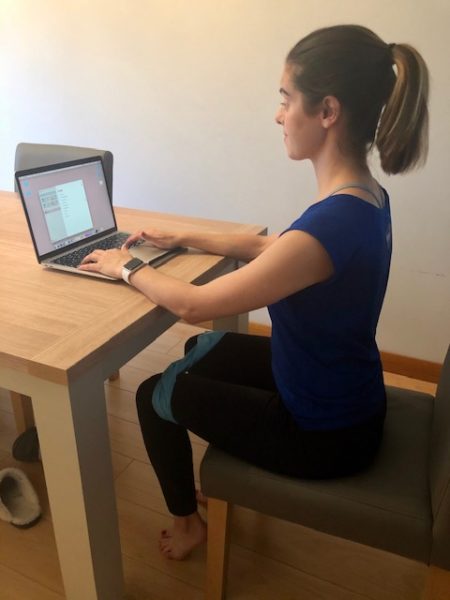
To reduce the weakness of the gluteals over time, and actually stimulate their activation, sit with a resistance band around your thighs as you work. Then open the knees outwards in to the band, hold 5 seconds, then relax. Repeat this for 8-10 repetitions through the day. Make sure the band isn’t too strong for this though, a light band will work since it is for gentle activation.
3) Sit-to-stand
To further activate the gluteals try standing up from your desk, then sitting down again, and repeating 10 times throughout the day. This encourages their activation instead of them being dormant as you literally sit on your bottom all day! Aim to keep knees and ankles in line with hips to continue the good alignment from above.
4) Pelvic tilts
Sit on the edge of your chair and roll your pelvis forwards (so as to curve your back), then backwards (so as to round your back) as far as comfortable. Aim to do 8-10 repetitions regularly through the day.
Upper body activation at your desk:
5) Dumb waitor
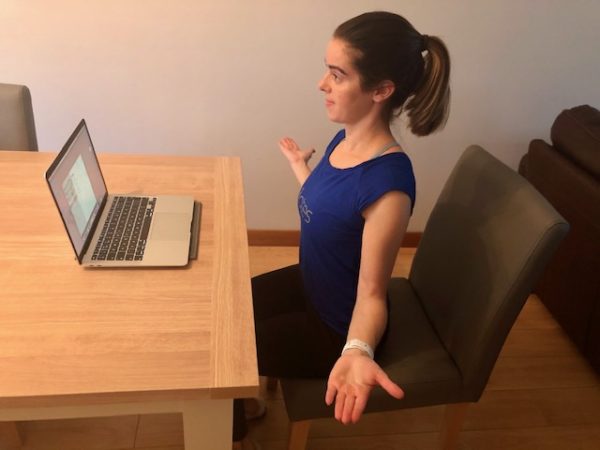
Sit up tall withy our elbows bent to 90 degrees by your waist. Open the forearms outwards, gliding your shoulder blades down your back at the same time. This is great for activating the upper back/shoulder blade muscles as well as opening up your chest. Repeat for 8-10 repetitions throughout the day, or whenever you feel yourself slouching forwards more.
6) Upper back movement
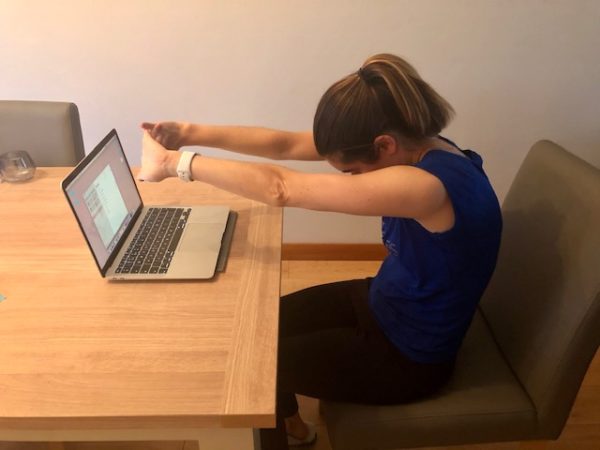
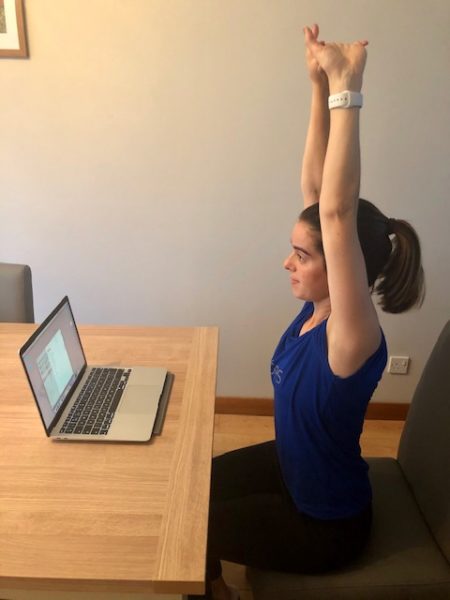
Sitting static generally causes upper back and spine stiffness and sometimes it just needs to move through a big range for relief. Here, interlace your fingertips and press down towards the ground, reach out in front, up to the ceiling, then open your hands and circle back to the start. Repeat 8-10 repetitions regularly.
7) Arm openings
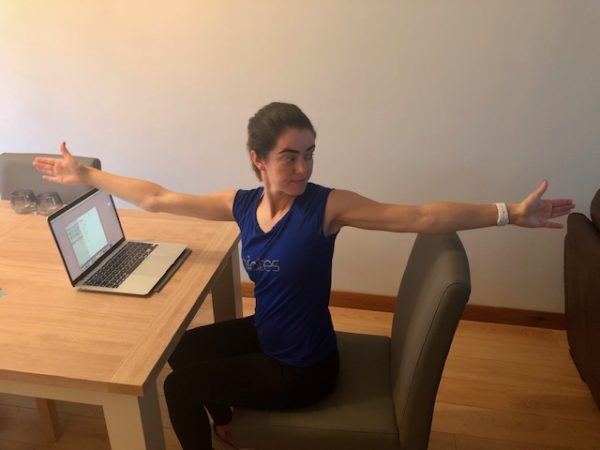
Sit up tall with both arms outstretched. Open one arm outwards and rotate around so that your arms come to a 180. Return to the start and repeat to the other side with the opposite arm. Continue for 8-10 repetitions to restore rotation to your trunk.
I hope these help you feel more comfortable at your desk and perhaps minimise any future aches and pains!
